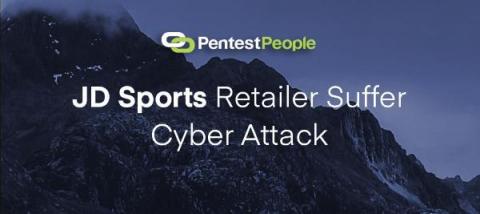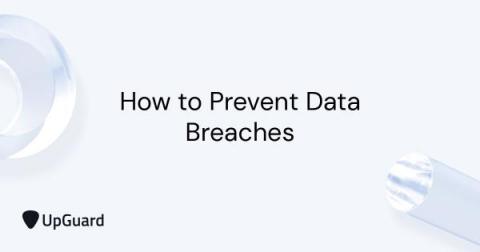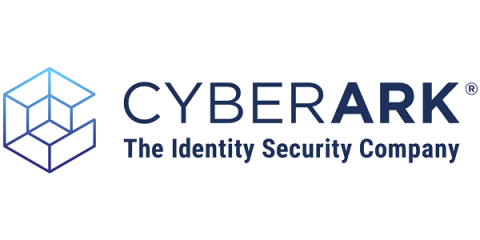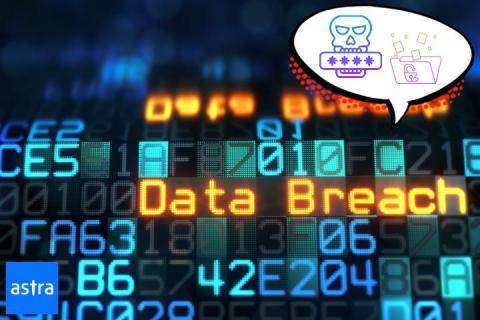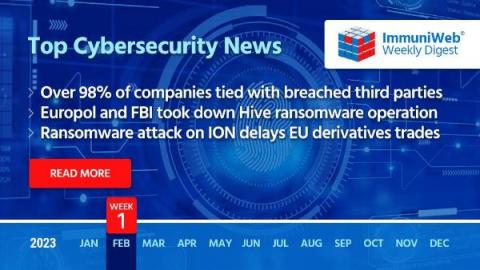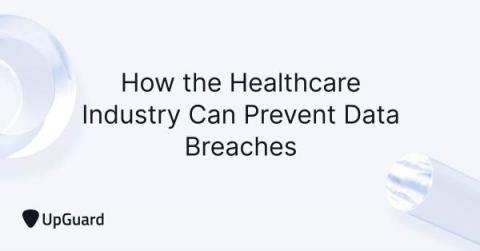Security | Threat Detection | Cyberattacks | DevSecOps | Compliance
February 2023
Democratized Breach Damage: The Economics Behind Ransomware
LastPass Breach Demonstrates the Power of Avoidance
A recent LastPass breach has once again raised concerns about password managers’ security, especially commercial password managers with cloud infrastructure. The breach led to hackers gaining access to both code and data. This time on Dark Reading, I describe how I became a proponent of secret managers and LastPass, my chosen password manager, and how I helped my family and colleagues to do the same.
JD Sports Retailer Suffer Cyber Attack
JD Sports Sportswear Retailer have suffered a cyber attack that exposed the data of 10 million customers accessed by backers in the attack. The personal data which was exposed includes customer’s names, email addresses, contact details and passwords.
January Cyber Roundup
Nearly 50% of healthcare organizations suffer from data breaches
The findings from a recent Gartner Peer Insights survey- Cybersecurity in the Healthcare Industry- show that nearly half of participating healthcare organizations have experienced a data breach in the past two years. As the number of connected and unmanaged devices increases, threats targeting IoT, IoMT and OT devices can undermine patients' confidence in the ability of healthcare organizations, and the industry as a whole, to deliver high-quality care and protect their safety.
2022 seems to be on target for the lowest year of reported breaches by large US corporations
Eliminate compromised passwords with One Identity Password Manager & Have I Been Pwned
It's a good question, and if you're curious about whether any of your email addresses or passwords were included in a data breach, you can easily find out at HaveIBeenPwned.com. This entirely free service, managed by Microsoft Regional Director & MVP Troy Hunt, lets you enter an email address or password to see how many breaches it has been included in.
How to Prevent Data Breaches in 2023
A data breach occurs when sensitive information is exposed to the public without authorization. These events are growing in popularity, costing businesses an average of US$4.35 million per event. Unfortunately, many companies are unknowingly still repeating the same mistakes causing some of the biggest breaches in history. To prevent your business from becoming another breach static, adjust your cybersecurity program to the proven breach prevention strategy outlined in this post.
Code Signing Security: Publishers Getting More Aware After GitHub's Certificate Breach
In this highly technology-driven world, no company is completely safe from cyber-attacks. Even one of the IT giants – GitHub faced exploitation, leading to the stealing of their Code Signing Certificates. There was only minimal impact on the organization and its software products. But, from the incident, almost every small, medium, and large-scale company has got aware of securing their software publisher certificates.
How The "No Fly List" Hack Highlights the Need for Cloud Security
Five Tips for Data Breach Prevention
Data breaches are on the rise and they can be both unexpected and costly. The average estimated cost of a data breach has peaked at an all-time high—an astounding $4.35 million, according to a 2022 report by IBM and the Ponemon Institute. Poor password hygiene and legacy software are two key culprits that will increase your chances of falling victim to a password breach.
Post-CircleCI Breach, Focus on Identity Security Strategy
When news of the recent CircleCI breach broke, developers everywhere scrambled to rotate tokens and remove hardcoded secrets stored in the popular CI/CD platform to minimize their exposure. Now that the dust has settled and more details are available, we’re reexamining the CircleCI attack chain to highlight the importance of a holistic Identity Security strategy in thwarting future damaging attacks.
Biggest Data Breaches You Need To Know About
Data breaches exposed at least 42 million records between March 2021 and February 2022. With the increasing risks associated with the cyber world, this comes as no surprise.
Almost All Firms Are Working With Breached Third Parties
Read also: Financial firm ION hit with a cyber-attack, Hive ransomware disrupted in a global cyber operation, and more.
How the Healthcare Industry Can Prevent Data Breaches
According to a report released by IBM and Ponemon, the healthcare sector has the highest rates of security breaches and cyber attacks globally. The average cost of a data breach for healthcare organizations is around $10.1 million, while the global average for all industries sits around less than half of that amount, at about $4.35 million.





